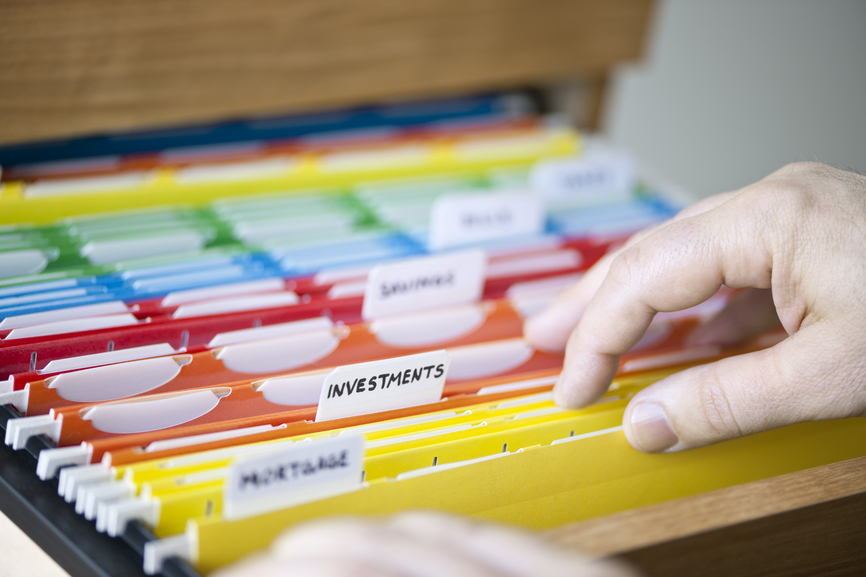
Have you ever thought about organizing your financial paperwork at home, but just don’t know where to start? Here are a few tips for what kinds of paperwork you should hold on to, and how to organize it.
1. First decide whether you want to keep physical copies of your paperwork, or if you want to go paperless. With the price of external hard drives and scanners dropping, it has become affordable for most families to keep a paperless filing system. However, if you go this route, make sure you back-up your files on a regular basis. Otherwise, you’ll lose everything if your hard drive crashes.
2. Make sure you label your folders instead of having just one location for all your paperwork. You’ll save a lot of time if you can go to your files and immediately find what you’re looking for because you labeled the folders. There’s a fine-line between the label names being too specific, and not specific enough. If you find your folders bulging after just a month, try to be more detailed with your labels so you have more folders. If you have one document inside of each folder, you may be able to consolidate by being less specific with your label names.
3. Keep your tax returns, including receipts and supporting documents. There’s always a chance you could be audited by the IRS, and it definitely helps if you are organized.
4. File your pay stubs and the Form W-2: Wage and Tax Statement that you receive January each year from your employer. This is usually the best proof of earnings for Social Security that you can have.
5. Keep your bank statements, check copies (if you have them), and credit card statements. You could need them if you’re audited by the IRS. Most banks offer online statements, so if you are using a paperless system, make sure to save a copy to your hard drive. If you aren’t using a paperless system, then you should print a copy of your statement and file as soon as it becomes available online.
6. Keep your day-to-day credit card/debit card receipts. For big tickets items, you should keep the receipt so that you can prove the purchase amount in the event of loss or damage. Depending on the type of item you’ve purchased, the amount, and what its purpose is for, the receipt may also be required for insurance and tax filing.
This list should help you get started with organizing your important financial paperwork at home. Make sure to check back next week for some tips on how long you should keep copies of each type of paperwork you have filed.
Share the Wealth of Knowledge!
Please share this post with family, friends, or colleagues using the links below. We love being introduced!
If you aren’t sure whether your portfolio is positioned properly for the current market environment based on the amount of risk that you’re comfortable with, we always provide a FREE 2nd Opinion Portfolio Review and would be more than happy to discuss your financial planning goals with you – please click here to schedule your meeting, or give us a call at 913.402.6099.
John P. Chladek, MBA, CFP® is the President of Chladek Wealth Management, LLC, a fee-only financial planning and investment management firm specializing in helping families and couples who are not yet retired realize their financial goals. For more information, visit http://www.chladekwealth.com.